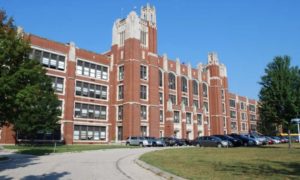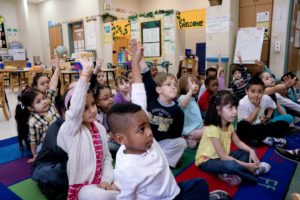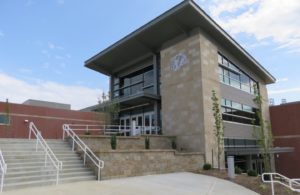Nearly 1 in 4 public school students are from immigrant families, putting pressure on a public system already in crisis
More immigrants are attending public schools than ever before, nearing one quarter of all students.
A new report from the Center for Immigration Studies (CIS) found that the number of students…

More immigrants are attending public schools than ever before, nearing one quarter of all students.
A new report from the Center for Immigration Studies (CIS) found that the number of students from immigrant families more than tripled in the past four decades.
In 1980, just 7% of public school students were from immigrant families. By 2021, that number skyrocketed to 23%.
And, CIS adds, “this estimate does not reflect the on-going border crisis and huge influx that began in 2021.”
These kids are also often concentrated in impoverished areas of major cities, adding to the number of low-income students those public schools already struggle to serve.
Another study conducted by the National Academies of Sciences, Engineering, and Medicine explained that such concentrations create a “net fiscal drain,” in which the cost of educating students increases without additional tax revenue to support it. Nearly half of public education dollars typically come from local taxes.
“Given the larger size of their [immigrants’] households, including more children, and lower incomes, this is not a surprising finding,” CIS wrote.
“While immigrants, including illegal immigrants, pay taxes, they almost certainly create significant challenges for schools in some areas by causing a large increase in enrollment without a corresponding increase in local taxes.”
Naturally, students of immigrants tend to need extra support with English, which also adds to the cost of education.
CIS reports the number of public school students who speak a foreign language at home has more than doubled since 1980, from 9% to 22%.
The Georgia Budget & Policy Institute (GDPI) reported that students participating in English to Speakers of Other Languages (ESOL) programs required thousands more in funding – anywhere from $1,200 per student for kindergarteners to nearly $6,000 for high schoolers.
This is typical across states. Missouri, for example, uses a funding formula with multipliers for certain categories of students, including a 1.6x multiplier for “limited English proficiency.” That amounts to an extra $3,825 per student per year.
And since public schools are required to work with students of all income-levels and language needs, not to mention learning disabilities or behavioral issues, school choice advocates say public education’s one-size-fits-all approach just won’t work.
“A one size system is never going to work for every single family,” says Corey DeAngelis, executive director of the Educational Freedom Institute.
School choice programs often prioritize low-income families, and in many cases, scholarships can be used for tutoring or other education-related services.
“A good education is the closest thing to magic in America,” said current presidential candidate and school choice supporter Sen. Tim Scott, R-South Carolina. “By equipping and empowering families with the ability to choose educational opportunities best suited for their children – public charter schools, parochial schools, homeschooling and more – we are prioritizing the success of students and our nation.”



